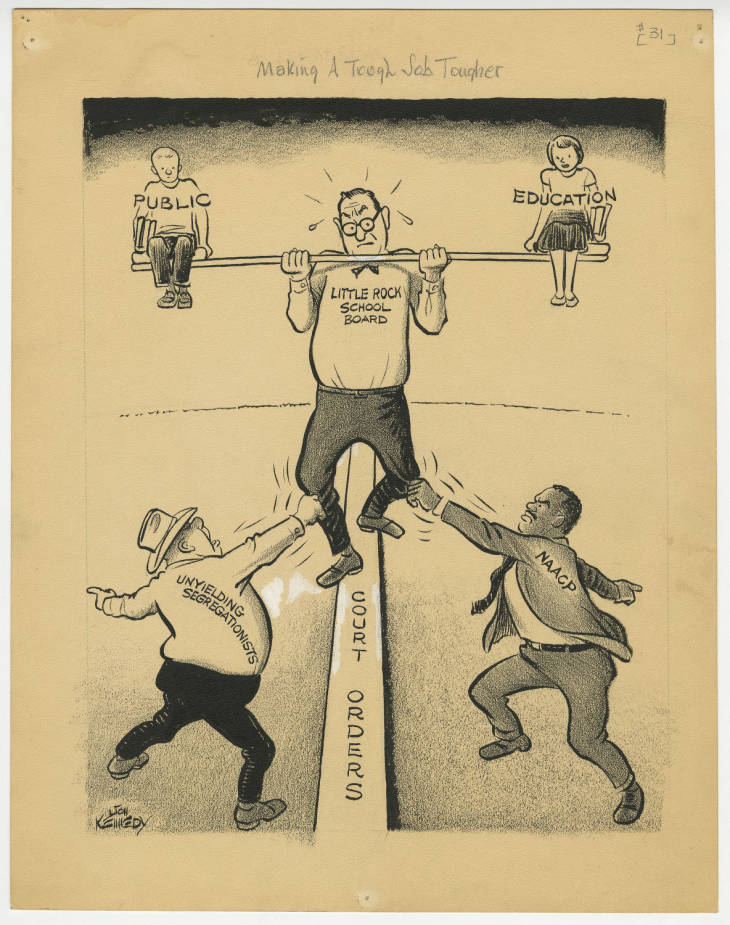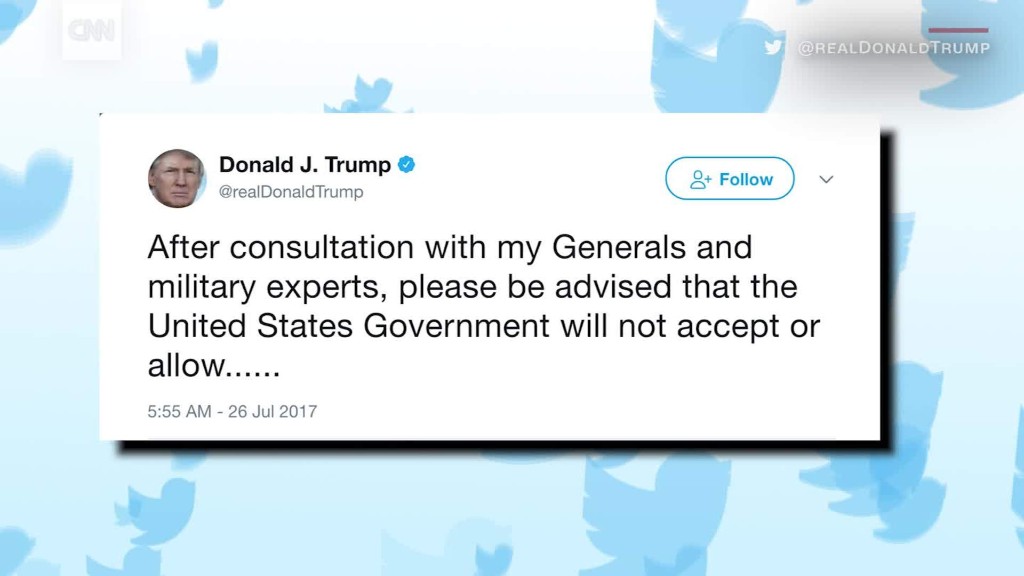End Of School Desegregation Order: Implications And Future Of School Diversity

Table of Contents
Legal Implications of Ending School Desegregation Orders
The legal landscape surrounding school desegregation is complex and constantly evolving. The Supreme Court’s decisions have shaped the trajectory of desegregation efforts for decades, and any shift in their stance could have far-reaching consequences.
Supreme Court's Role and Precedent
The Supreme Court's landmark ruling in Brown v. Board of Education (1954) declared state laws establishing separate public schools for black and white students unconstitutional. However, the implementation of Brown has been a long and arduous process, fraught with resistance and legal challenges. Subsequent cases, such as Milliken v. Bradley (1974), further clarified the scope of desegregation orders, often limiting their reach.
- Key Cases and Rulings:
- Brown v. Board of Education (1954): Declared state-sponsored segregation in public schools unconstitutional.
- Swann v. Charlotte-Mecklenburg Board of Education (1971): Upheld the use of busing to achieve desegregation.
- Milliken v. Bradley (1974): Limited the scope of desegregation orders to individual school districts, hindering regional integration efforts.
- Parents Involved in Community Schools v. Seattle School District No. 1 (2007): Limited the use of race as a factor in assigning students to schools.
Ending desegregation orders could open the floodgates to legal challenges, potentially leading to widespread resegregation and the dismantling of decades of progress. The very concept of "resegregation"—the return to racially segregated schools—is a chilling prospect with potentially devastating consequences.
State and Local Legal Challenges
The potential repeal of federal desegregation orders would likely trigger a wave of legal battles at the state and local levels. School boards, civil rights organizations, and individual families could file lawsuits challenging the legality of any actions that lead to increased racial segregation in schools.
- Potential Legal Battles:
- Lawsuits challenging the constitutionality of policies leading to resegregation.
- Legislative challenges to state laws that undermine desegregation efforts.
- Local school board decisions that disproportionately affect minority students.
Societal Impact of Resegregation
The societal ramifications of resegregation extend far beyond the schoolhouse doors. Resegregation would likely exacerbate existing inequalities and undermine social cohesion.
Educational Inequality
The achievement gap between students of different racial and ethnic backgrounds is a persistent and deeply troubling issue in American education. Resegregation would likely widen this gap, as schools would once again become bastions of inequality, mirroring the systemic racism that Brown v. Board of Education sought to dismantle.
- Consequences of Resegregation:
- Increased achievement gaps based on race and ethnicity.
- Unequal access to high-quality teachers and resources.
- Perpetuation of systemic inequities in education.
Social and Economic Consequences
The impact of resegregation extends far beyond the classroom, influencing housing patterns, neighborhood segregation, and overall social cohesion. Resegregated schools could fuel economic inequality, reinforcing existing disparities in wealth and opportunity.
- Broader Societal Impacts:
- Increased residential segregation and concentrated poverty.
- Reduced social mobility and economic opportunity for minority students.
- Heightened racial tensions and social unrest.
Strategies to Promote School Diversity in a Post-Desegregation Era
Despite the potential setbacks, there are strategies that can be implemented to promote school diversity even in the absence of mandatory desegregation orders.
Magnet Schools and School Choice Programs
Magnet schools and school choice programs, when designed effectively, can play a significant role in promoting school diversity. However, it’s crucial to address their limitations and potential unintended consequences.
- Effectiveness and Limitations:
- Magnet schools can attract diverse student populations but may not be accessible to all.
- School choice programs can lead to increased segregation if not carefully managed.
Affordable Housing Initiatives and Community Development
Addressing housing segregation is critical to promoting school diversity. Integrated communities are more likely to have integrated schools.
- The Housing-School Link:
- Concentrated poverty and housing segregation often lead to segregated schools.
- Investments in affordable housing and community development can foster integration.
Addressing Implicit Bias in Education
Implicit bias, whether conscious or unconscious, plays a significant role in perpetuating educational inequalities. Strategies to mitigate implicit bias are essential for creating truly inclusive schools.
- Strategies for Mitigation:
- Teacher training programs that address implicit bias.
- Curriculum development that promotes diversity and inclusion.
- Fostering inclusive school environments that celebrate diversity.
Conclusion
The potential end of school desegregation orders poses a significant threat to school diversity and educational equity. The legal implications are complex, and the societal consequences could be far-reaching, exacerbating existing inequalities and undermining social cohesion. While the legal landscape may shift, the need for school diversity remains paramount. We must advocate for policies and programs that promote integrated schools and address the systemic issues that perpetuate segregation. Contact your representatives, support organizations working to promote school integration, and stay informed about developments in this crucial area. The fight for school desegregation, and the pursuit of school diversity and educational equity, continues.

Featured Posts
-
 Are Highly Requested Fortnite Skins Returning To The Item Shop 1000 Days Later
May 02, 2025
Are Highly Requested Fortnite Skins Returning To The Item Shop 1000 Days Later
May 02, 2025 -
 Xrps Big Moment Navigating Etf Uncertainty And Sec Regulatory Scrutiny
May 02, 2025
Xrps Big Moment Navigating Etf Uncertainty And Sec Regulatory Scrutiny
May 02, 2025 -
 Minnesota Special Election Key Takeaways From Ap Decision Notes
May 02, 2025
Minnesota Special Election Key Takeaways From Ap Decision Notes
May 02, 2025 -
 Xrp Price Prediction 2024 Dubai License Fuels 10 Target
May 02, 2025
Xrp Price Prediction 2024 Dubai License Fuels 10 Target
May 02, 2025 -
 Concerns Rise Among Kashmir Cat Owners Following Viral Posts
May 02, 2025
Concerns Rise Among Kashmir Cat Owners Following Viral Posts
May 02, 2025
Latest Posts
-
 Trumps Transgender Military Ban Decoding The Double Speak
May 10, 2025
Trumps Transgender Military Ban Decoding The Double Speak
May 10, 2025 -
 Transgender Girls Banned From Ihsaa Sports Following Trump Order
May 10, 2025
Transgender Girls Banned From Ihsaa Sports Following Trump Order
May 10, 2025 -
 Analyzing Brobbeys Strength A Decisive Factor In The Europa League
May 10, 2025
Analyzing Brobbeys Strength A Decisive Factor In The Europa League
May 10, 2025 -
 Transgender Individuals And Trumps Policies A Community Perspective
May 10, 2025
Transgender Individuals And Trumps Policies A Community Perspective
May 10, 2025 -
 Europa League Preview Brobbeys Physicality A Major Weapon For Ajax
May 10, 2025
Europa League Preview Brobbeys Physicality A Major Weapon For Ajax
May 10, 2025
